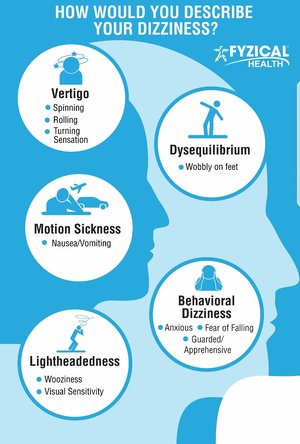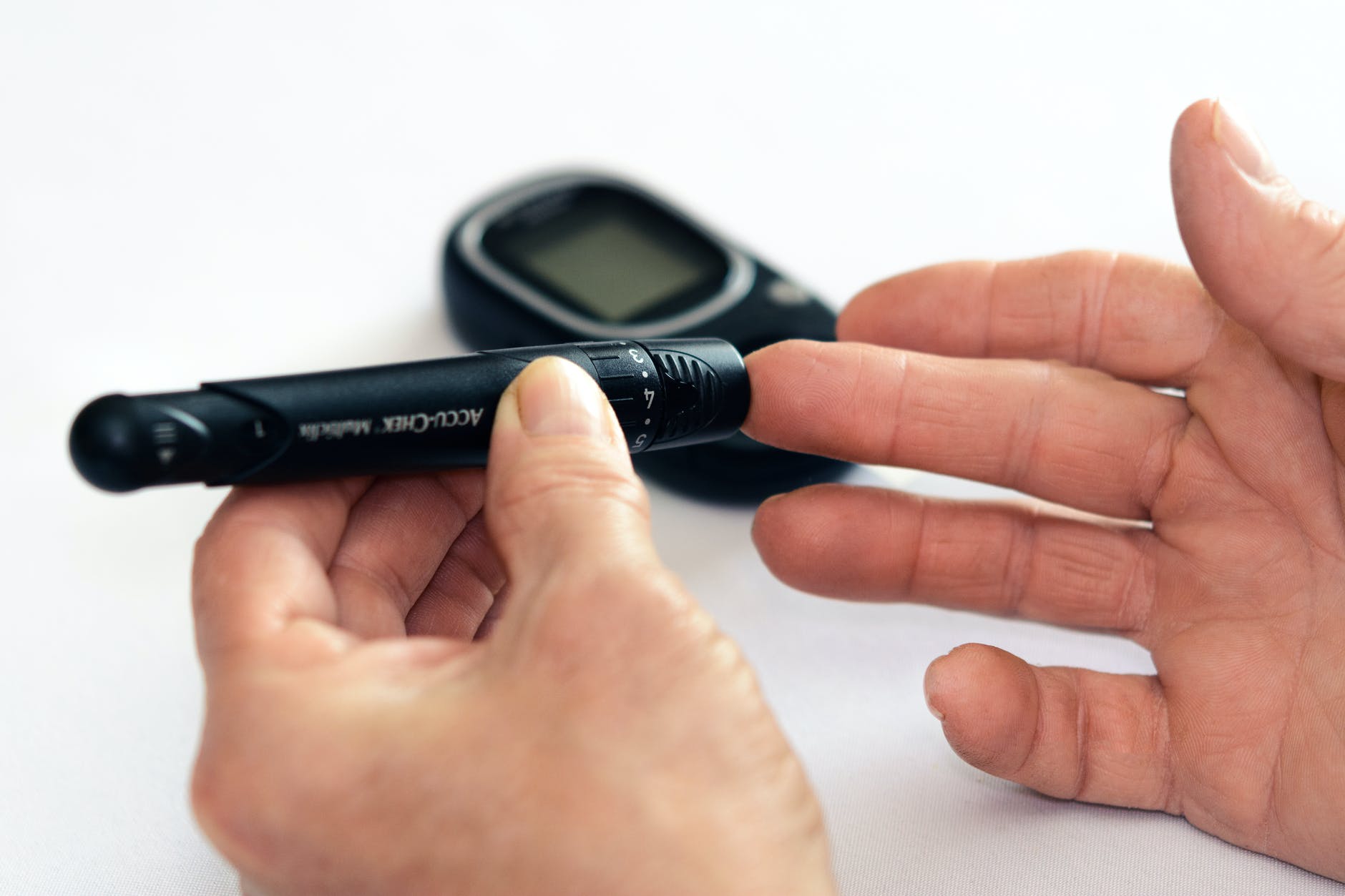
Dizziness can significantly impede your quality of life. Not only does it feel unpleasant, but in many, it also increases your risk of falling. For people with recurrent or chronic dizziness, it can prevent them from being able to do the things they want to do. Luckily there are steps you can take to reduce or even eliminate your dizziness.
In order to determine the best way to treat your dizziness, you need to understand why you are feeling dizzy. The most effective strategy is to work with a professional, who is familiar with dizziness causes and treatments. From here, a treatment plan tailored to your specific needs is developed.
Types of dizziness
Dizziness is a broad term that can describe a few different sensations:
- Vertigo: characterized by a spinning or rocking sensation
- Presyncope: the technical term for feeling like you’re about to faint. Often described as lightheadedness
- Disequilibrium: feeling imbalanced or unstable
What causes dizziness?
Most cases of dizziness are caused by dysfunction in the inner ear. This is one of the most important balance organs in our body, and when it doesn’t work properly, we become dizzy.
The inner ear is made up of three fluid-filled semi-circular canals, which sense rotational motions, and tiny otolithic organs to sense linear movement. Every time your head moves, the inner ear sends information to the brain about your movement. This information is sent to other systems (visual, sensory, motor), which allows you to orient yourself, keep your balance, and plan and carry out movements.
Disorders of the inner ear affect the integrity of the information that is sent to your brain. This changes how your brain perceives your orientation and movements. For example, if your brain gets incorrect information from the inner ear saying that you’re spinning in a circle, but information from the visual system says you are standing still, your brain cannot reconcile these different bits of data. As a result you feel dizziness.
There are several common inner ear disorders, including:
-
Benign Paroxysmal Positional Vertigo (BPPV)

BPPV is caused when tiny crystals in the otolithic organs become loose. When this happens, they can accidentally find their way into one of the semi-circular canals. When this happens, the crystals move in the canal anytime we change our head position. This causes information to the brain saying you’re moving, even if you’re not.
If you have BPPV, you will often feel dizzy when you turn your head in a specific way. BPPV symptoms include vertigo that lasts for 15-20 seconds, nausea/vomiting, feeling lightheaded or faint, and nystagmus (rapid, involuntary eye movements).
BPPV can affect one or both ears, which may change how you experience your symptoms. Physical therapy is one of the most effective ways to manage and treat BPPV.
-
Vestibular Neuritis or Labrinthitis
If you only feel dizzy when your eyes are closed, you may have vestibular neuritis or labyrinthitis. These disorders cause inflammation in the nerve that carries information from the inner ear to the brain. This affects the accuracy of information being relayed. When your eyes are open, your brain can use visual information to help you understand your spatial orientation. However, once your eyes are closed your brain relies mostly on the inner ear to determine your orientation and movement. If the nerve sending information from the inner ear is inappropriately active, your brain thinks you’re moving even when you’re lying still.
-
Vestibulopathy
If you are dizzy only when you are walking, especially if you are in the dark or on an uneven surface, you may have a vestibulopathy. Normally, when you take a step your brain activates your postural reflexes. These help you manage balance and keep you upright. Inappropriate activation of these reflexes makes it very difficult to maintain balance when you’re walking. This can occur in just one, or both inner ears. If it affects just one side, your symptoms can include vertigo, and you may notice you have a hard time walking in a straight line. If both sides are affected, you generally do not experience vertigo. Other symptoms include nausea and vision problems during an attack. Physical therapy is an effective treatment to reduce symptoms and improve balance.
-
Ménière’s disease
This poorly understood disorder causes spontaneous, often severe dizziness or vertigo, that lasts for more than 20 minutes. Ménière’s disease symptoms are caused by abnormally large amounts of fluid in the inner ear. Over time, this progresses in severity and frequency. The early stages include spontaneous, severe vertigo, nausea/vomiting fluctuating hearing loss, tinnitus, and a sense of fullness in the ear. As the disease progresses, symptoms become more severe and vision may become blurry or jerky.
The circulatory system is another common cause of dizziness. An important function of the circulatory system is to supply the brain with oxygen and glucose-rich blood. These is essential in ensuring normal brain cell function. If cells don’t get enough oxygen or glucose, you will feel dizzy or woozy. There are a few common causes of dizziness related to the circulatory system:
-
Orthostatic (postural) Hypotension (low blood pressure)
Have you ever stood up too quickly and become dizzy or lightheaded? If so, it’s likely that you experienced orthostatic hypotension. When we sit or lie down for a while, blood tends to pool in our legs or abdomen. If we jump up suddenly, the circulatory system doesn’t have enough time to increase blood flow to the brain. A a result, we feel brief dizziness.
-
Dehydration
A lack of water in the circulatory system causes a loss in volume. In turn, this causes low blood pressure, and reduces the amount of oxygen and nutrients transported to the brain. As a result, dizziness occurs.
-
Low blood sugar
 Glucose is a sugar required for healthy brain function. When we eat, our bodies transport glucose from the digestive tract into the circulatory system. Skipping a meal can cause low blood sugar, and the brain may not be supplied with adequate glucose for normal brain function. This causes us to feel dizzy.
Glucose is a sugar required for healthy brain function. When we eat, our bodies transport glucose from the digestive tract into the circulatory system. Skipping a meal can cause low blood sugar, and the brain may not be supplied with adequate glucose for normal brain function. This causes us to feel dizzy. -
Hyperventilation
Oxygen is crucial for brain function. If we breathe too quickly and start to hyperventilate, blood vessels constrict. Consequent low carbon dioxide levels and poorly oxygenated blood results in the brain getting an inadequate supply. This again results in dizziness.
How to get rid of dizziness from anxiety
Anxiety can activate the parts of the brain that cause dizziness. Unfortunately, the more you expereince anxiety related dizziness, the more you associate the two together. As this connection becomes stronger, it can lead to the development of a psychiatric disorder.
Numerous studies have found that the most effective treatment strategy to help people manage anxiety and dizziness is a combination of behavioral therapy and physical therapy. This helps by addressing the root cause of your symptoms, and providing tools and techniques to reduce anxiety and minimize dizziness.
Food for dizziness treatment
Low blood sugar is a major cause of dizziness and skipping meals can leave you feeling tired and lightheaded. A healthy diet, including plenty of water is the best way to prevent the occasional dizzy spell. Some foods are particularly beneficial:
- Fruits: A great source of sugar, water, vitamins and fiber
- Nuts: Almonds, cashews and walnuts provide fatty acids and vitamins
- Vegetables: A good source of iron, potassium, and other vitamins
If you’re always on-the-go and frequently skip meals, keep a granola bar in your bag. Even a small can of soda is a quick source of sugar that can help you if you’re feeling lightheaded.
First aid for dizziness
The most important thing to do if you’re feeling dizzy is to lie down in a safe place and stay still until the spell passes. Drinking water can help relieve dizziness, and if you haven’t eaten in a while, getting some food can also help. Avoiding bright lights and loud sounds can help you overcome a dizzy spell. Once your dizziness has subsided, get up slowly and avoid sudden movements.
Lightheadedness and fatigue
Lightheadedness describes the sensation of feeling faint or like you might pass out. Rare occurrences of lightheadedness are common and, alone, do not indicate that you have a concerning medical condition. However, if you are regularly feeling lightheaded in combination with fatigue, you may have an underlying disorder.
Common causes of recurrent or chronic lightheadedness and fatigue include:
-
Chronic fatigue syndrome (CFS)

CFS is a very frustrating and poorly understood disorder. People who suffer from CFS experience persistent, often debilitating fatigue, muscle pain, sleep disorders, headaches, dizziness, memory loss and poor concentration.
-
Low blood sugar
Glucose is an important energy source that we get from our food. Without enough glucose, we will feel lightheaded and fatigued. Normally, maintaining a healthy diet is the best way to prevent low blood sugar. If you regularly skip meals, you may experience frequent lightheadedness and fatigue. People with diabetes are at particular risk for low blood sugar.
-
Concussions
After a concussion or whiplash injury, people frequently experience post-concussion syndrome. In addition to lightheadedness and fatigue, symptoms include irritability, mood swings, insomnia, weakness, headache, short-term memory loss, and an inability to focus.
Treatment for your lightheadedness and fatigue will depend on the cause. CFS and post-concussion syndrome respond very well to physical therapy, especially when combined with behavioral therapy. For most people, getting plenty of sleep, eating a healthy diet and regular exercise will prevent lightheadedness and fatigue. If you live a healthy lifestyle and are still regularly experiencing lightheadedness and fatigue, you may want to see your doctor to rule out a serious medical condition.
Natural remedies for dizziness and balance
The best way to prevent dizziness and improve balance is to eat a healthy diet, drink plenty of water, and get regular exercise. If you’re still experiencing dizziness, make an appointment with Fyzical to discuss your symptoms and learn about treatment options.